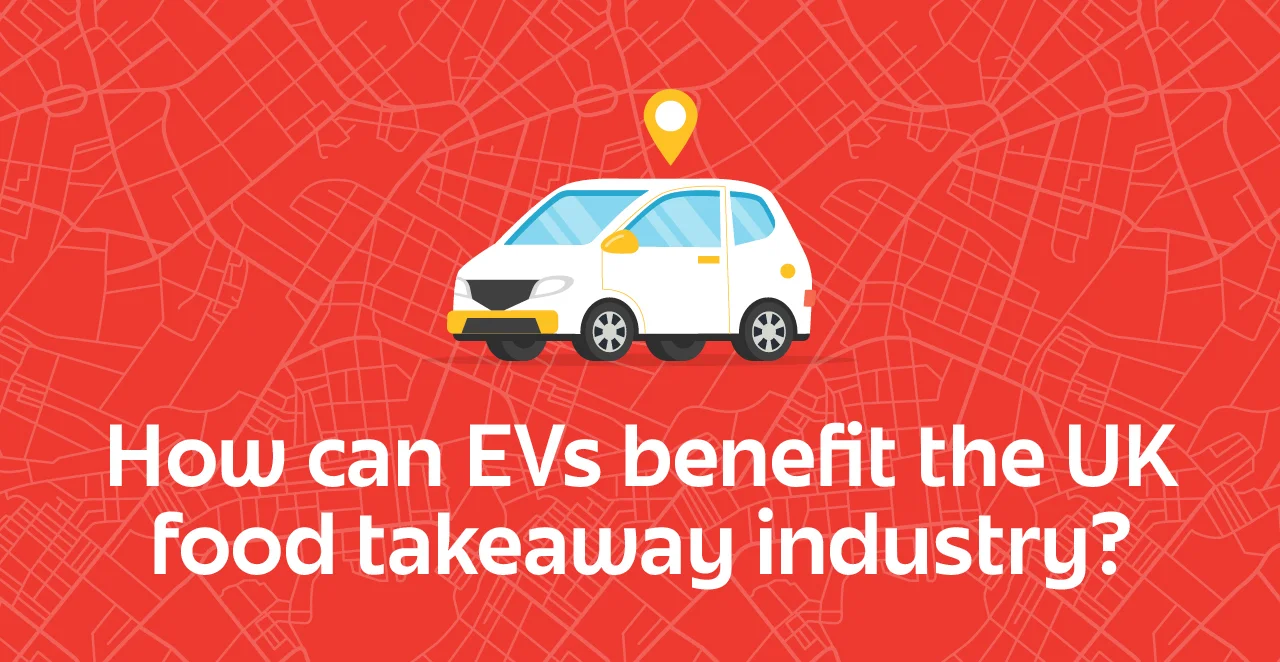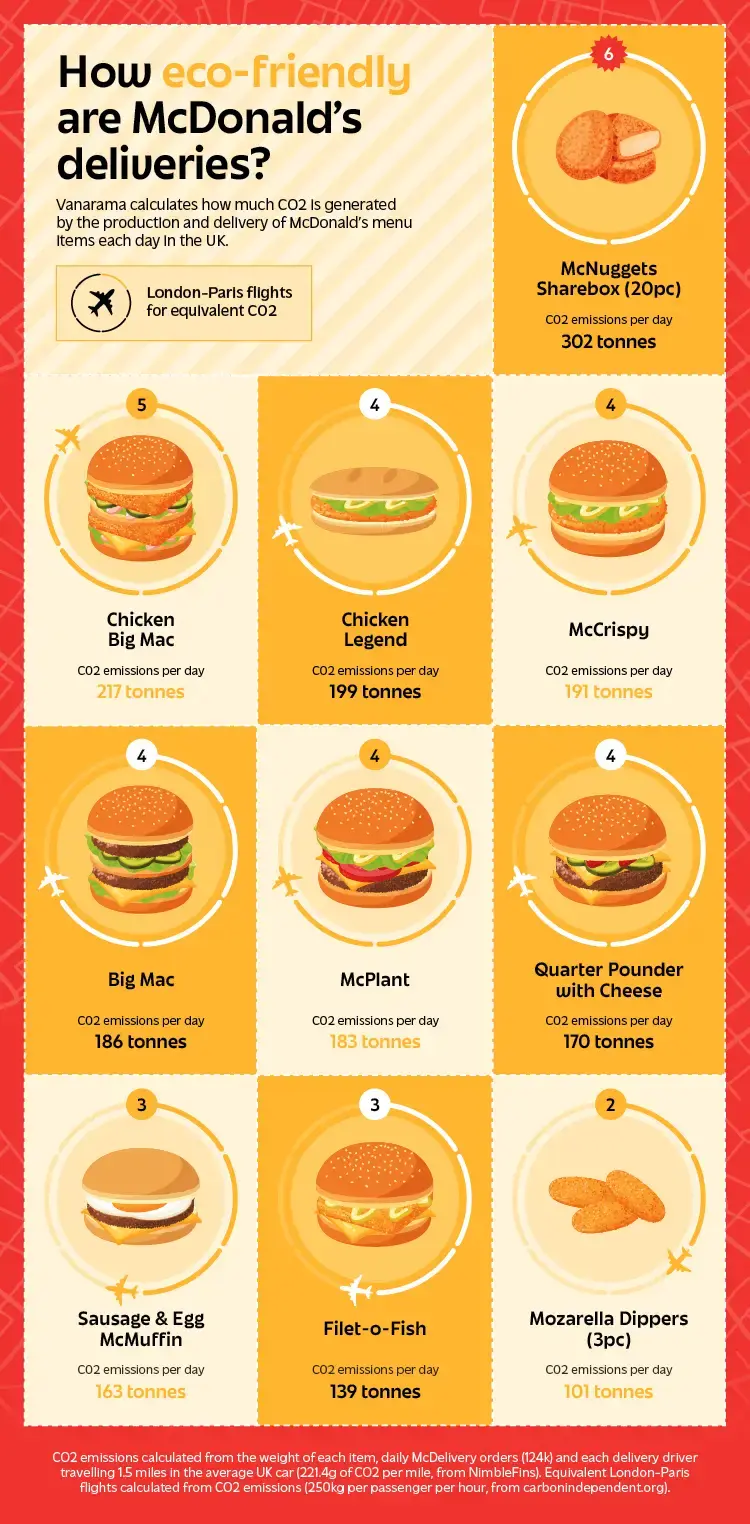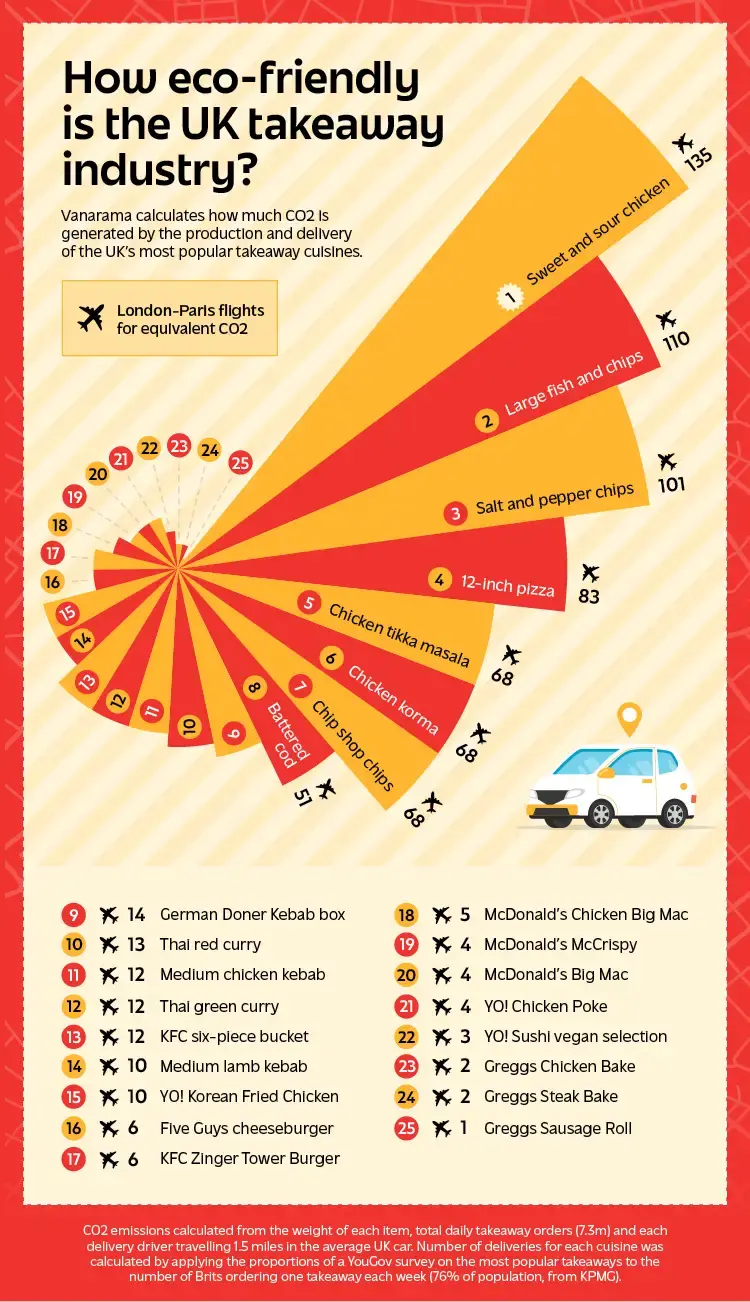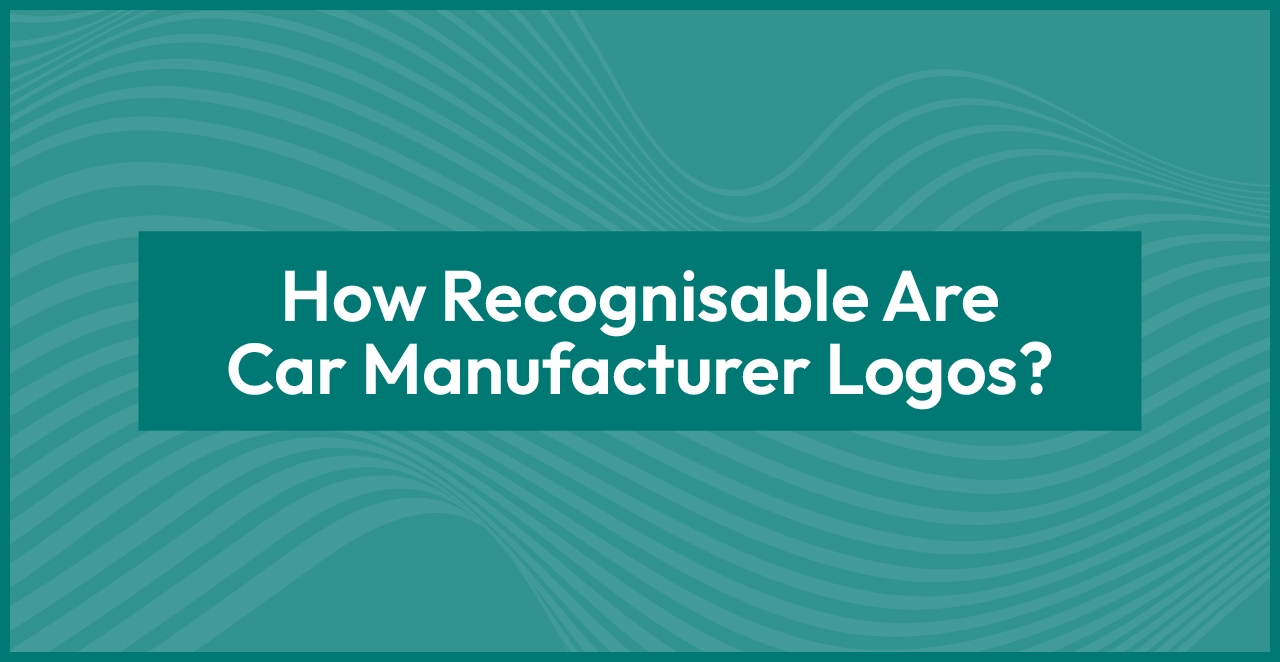The Chicken Legend, a McDonald’s mainstay of 15 years, was dropped from the menu in late 2022 – much to the dismay of fans. The fast food chain states the Legend has made way for new items, but could it actually be Maccies’ eco-consciousness kicking in?
Vanarama has estimated the carbon emissions of producing and delivering some of the most popular menu items from McDonald’s and the UK’s other favourite takeaway cuisines. This study highlights the potential environmental damage of ordering a takeaway – and how EVs could be the solution.
Electric McDelivery Cars Could Save More Than 41 Tonnes Of CO2
In addition to sitting in and ordering at the drive-thru, McDonald’s also brings dinner to your door through its McDelivery service, which gets up to 124,000 hits a day. Multiplying that by the average UK car’s emissions (221.4g of CO2 per mile) and delivery distance (1.5 miles) means Maccies deliveries could generate up to 41 tonnes of CO2 every day.
If Uber Eats and Just Eat drivers (who fulfil McDelivery orders) switched to an all-electric car, however, the CO2 savings would be enough to make 84,733 carbon-neutral portions of mozzarella dippers, 35,378 Big Macs or 19,610 Shareboxes – that’s 392,200 guilt-free chicken nuggets.
The Chicken Legend’s Replacement Generates Only 4% Less CO2
If McDonald’s was hoping to replace the Chicken Legend with a less environmentally harmful product, the McCrispy might not be it. Producing and delivering a single Chicken Legend releases 1.6kg of CO2, but the McCrispy is not far behind on 1.5kg – a reduction of only 4 per cent.
With up to 124,000 McDelivery orders per day, that means the new fried chicken burger alone amasses up to 191 tonnes of CO2 in just 24 hours, which is the same amount generated by four fully booked London-Paris flights.
And it’s even worse for the limited-edition Chicken Big Mac, returning in late March 2023. Each one produced and dropped off generates more than 1.7kg of CO2, amounting to 217 tonnes per day. Perhaps Golden M-goers would prefer the Chicken Legend, which generates 18 tonnes less of CO2 per day, to make a return instead.
In fact, nine of the ten Maccies menu items we studied have a carbon footprint of more than a kilogram for each and every example made and delivered. A portion of mozzarella dippers is the only item to come in below a kilo, but even that produces 818g of CO2 through production and delivery, or up to 101 tonnes across the UK each day.
McNuggets Are The Most At-Risk Menu Item For Carbon Cutting
Fans of the McNuggets especially should be worried, as we found it the worst product for emissions. A 20-piece Sharebox generates almost 2.5kg of CO2, or 302 tonnes across all restaurants each day – equivalent to six London-Paris flights.
Although the vegan McPlant is down in sixth with 1.5kg of CO2 per item, it’s only 24 grams better off than the seemingly less sustainable Big Mac. For the least environmentally harmful burger, get a Filet-o-Fish (1.1kg CO2).
Sweet And Sour Chicken Is The UK’s Least Eco-Friendly Takeaway Dish
We also analysed dishes from other takeaway favourites, based on a YouGov survey of the UK’s most popular cuisines and the number of orders each week. Picking common items from the nine top cuisines, plus national chain Greggs, we were able to highlight the best – and worst – offenders when it comes to carbon.
The resounding loser is sweet and sour chicken, which across the UK is responsible for 6,309 tonnes of CO2 each day – the same generated by 135 London-Paris flights. Fish and chips is 1,000 tonnes better off (5,160 tonnes), but even that is equivalent to 110 flights between the UK and France capitals.
Even chip shop chips without any accompaniment have a daily carbon footprint of 3,196 tonnes of CO2 or 68 London-Paris flights.
A Single Day’s Worth Of Salt And Pepper Chips Generates As Much CO2 As 101 Flights Between London And Paris
Salt and pepper chips, often seen as a side order, produce more CO2 than all but two of the dishes in our research (sweet and sour chicken and a large fish and chips).
Accounting for 4,719 tonnes of CO2 across the UK every day, the popular order generates as much carbon as 101 London-Paris flights in every 24-hour period.
Thai curries are a much more sustainable alternative, with green and red curries generating between 566 and 623 tonnes of CO2 each day – up to eight times less than salt and pepper chips.
Kebabs Are Better For The Environment Than At Least Eight Takeaway Dishes
Despite its reputation as the ultimate post-night out nosh, confirmed in a survey of 1,500 people by food brand Squeaky Bean, the kebab is arguably much cleaner than many believe. Generating between 469 and 645 tonnes of CO2 per day, doner and chicken kebabs have a smaller carbon footprint than several takeaway favourites, including fish and chips and chicken tikka masala.
Pizza is another that sits towards the least eco-friendly end of the table; the average 12-inch pizza accounts for 3,870 tonnes of CO2 across the UK daily, eclipsing a medium lamb kebab (469 tonnes).
KFC Chicken Accounts For Much More CO2 Than McDonald’s Burgers
In comparison to other cuisines, McDonald’s is actually among the more eco-friendly, with the Chicken Big Mac, McCrispy and Big Mac down in 18th, 19th and 20th on total CO2 per day (between 186 and 217 tonnes).
Rival fast food chain KFC doesn’t perform so well – just six pieces of Original Recipe chicken produce 554 tonnes of CO2 each day, while the Zinger Tower Burger is responsible for 260 tonnes. However, the latter just about undercuts a Five Guys cheeseburger (267 tonnes).
Greggs Makes The UK’s Most Eco-Friendly Takeaways
Greggs is the real winner; the famous chain’s Chicken Bake, Steak Bake and sausage roll are the only products generating less than 100 tonnes of CO2 across the year, making these items the three most eco-friendly takeaway foods.
Just one portion of sweet and sour chicken (6,309 tonnes of CO2 per day) generates as much carbon as 91 sausage rolls. Food for thought ahead of your next order.
For more automotive insight and news, bookmark our blog, or browse our latest car lease deals if you’re considering leasing.
Methodology
The CO2 emissions from producing each food item were calculated by applying the item’s weight to Small World Consulting’s study on the link between the weight of processed food and carbon dioxide (6kg of CO2 per kilogram of processed food). Delivery emissions were then calculated by multiplying the CO2 emissions of the average UK car (221.4g per mile, NimbleFins) by the average delivery distance (1.5 miles, McDonald’s), and added to the production emissions.
For total CO2 emissions across the UK each day, the McDonald’s figures were multiplied by the maximum daily orders (124,000, This is Money). Daily orders for the other cuisines were calculated as a proportion of total weekly UK takeaway orders (51.2m, KPMG), based on a YouGov survey of the most popular takeaway cuisines by percentage.
The figures were then applied to the emissions generated in flying 150 passengers between London and Paris (250kg CO2 per passenger per hour, Carbon Independent, which is 312.5kg for a London-Paris flight).







